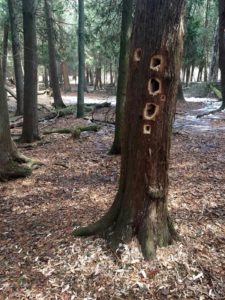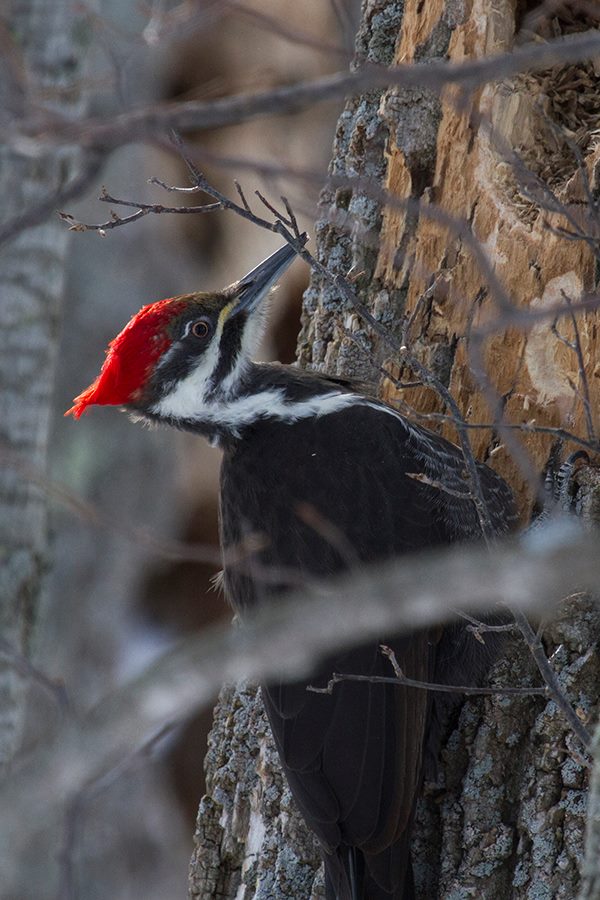Written by Jeni Klein, Land Management Coordinator

Pileated woodpecker holes
The other day Nancy Nabak and I were walking the Ice Age Trail in preparation for the upcoming Dash at the Dunes 5k trail run/walk on April 21. While we were measuring the trail, assessing areas that may need to blocked off due to spring melt, and taking notes on areas that may need course guidance, we came across a cedar tree with fresh holes in the trunk and wood shavings on the ground below. Upon further inspection, there were six more fresh holes on the other side of the tree, and three more trees in the immediate area with fresh holes. All of these holes were quite large. Some holes were round and some were more oval or rectangular. We were excited to find this treat: Pileated woodpecker holes.
Pileated woodpeckers are large in size, 16-19 inches long with a wingspan of 26-30 inches. For comparison, they are roughly the size of a crow. They have a red crest on their heads and black and white striping on their face. Males have a red stripe on their cheek. These birds hold large territories, mate for life, and do not migrate.

Pileated woodpecker
Pileated woodpeckers drill large, rectangular-shaped holes in trees to get to ants and other insects. These are not live, healthy trees; rather, they are trees which are either already dead, or are dying or have internal decay. These woodpeckers make their holesdeep into the trees as they follow tunnels made by opportunistic insects. They will then use their long tongues to reach these insects. They will also eat wild fruit and nuts such as hackberry, blackberry, sumac berries, dogwood, and elderberry. We have been planting many of these shrubs in our preserve over the past few years. Hopefully the woodpeckers and other birds appreciate the food we provide them as much as we appreciate the birds.
Pileated woodpeckers make large nest cavities which are occasionally shared with bats and swifts. Wood ducks, European starlings, and other woodpeckers also use dead trees for nest sites. It takes pileated woodpeckers 3-6 weeks to complete a nest cavity. They raise one set, or brood, of young a year, laying between 3-5 eggs. The incubation period is 15-18 days and the nesting period is 24-31 days, with young born naked and helpless.
Often we hear woodpeckers drumming on trees, creating these holes, but it is less often that we actually see them. The weather is warming up and spring in the air. Now is a great time to get out in the woods, and if you can sign up for our Dash on April 21, you can support Woodland Dunes at the same time. The spring ephemerals are starting to awaken on the forest floor, and you may just catch a glimpse of the Pileated woodpeckers.
photos by Nancy Nabak
